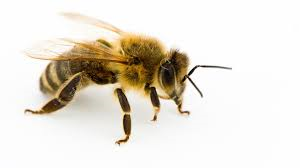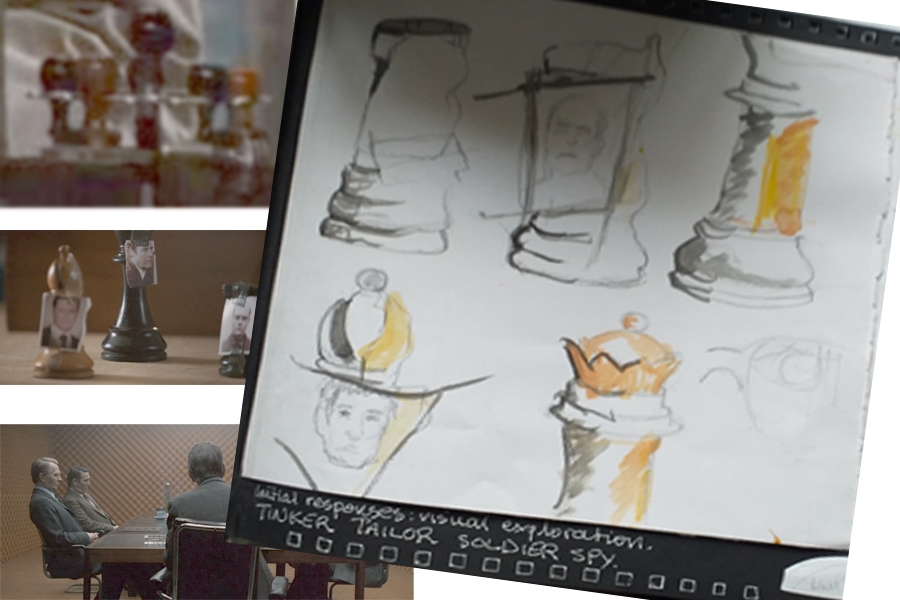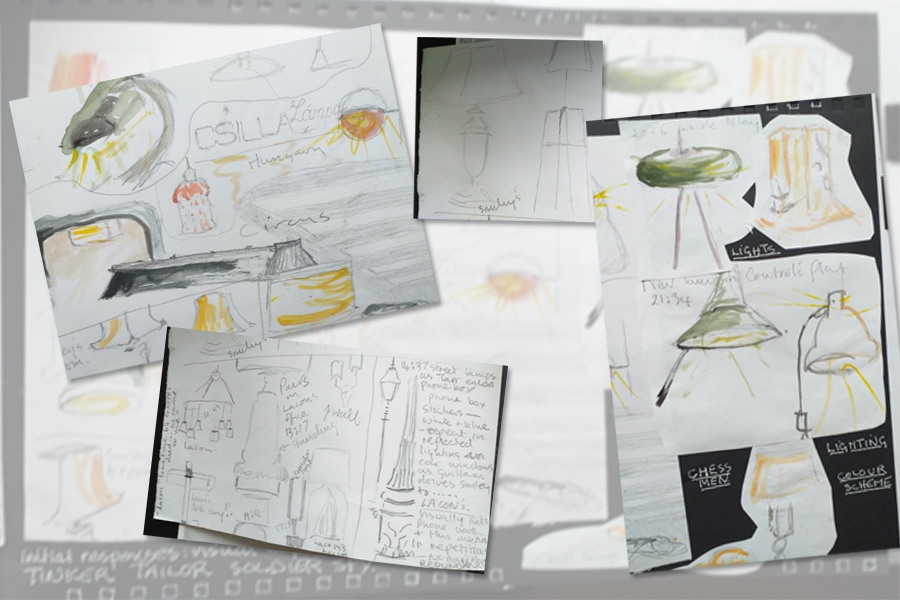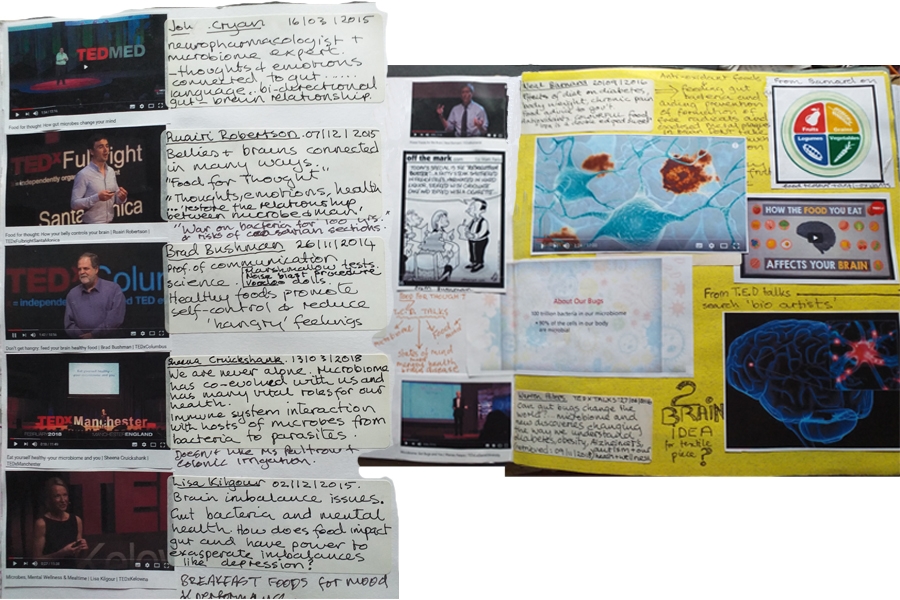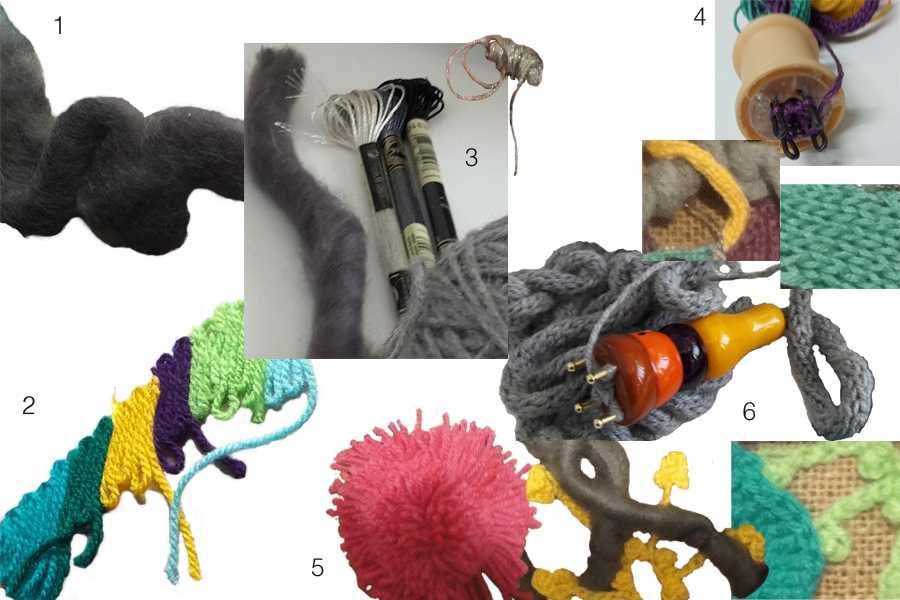Poorly, and from the comfort of the sick-bed (settee), last October: I began the ‘Patron’s Legacy’ project by watching all of the films back to back – twice. That got past being distracted by ‘plot, narrative, characterisation, script, redundancy etc …….. (I love film analysis). As my husband often says “Can you not just bl**dy watch the film?!!!” This allowed me to pick two films to concentrate upon visually – they would be ‘Tinker Tailor Soldier Spy’ (2012) and ‘Scandal’ (1989). I was drawn to the latter because the story has a rather odd personal resonance – I was Christened ‘Christine’ right at the height of the Profumo affair being in the news and apparently, my Grandparents (as featured in ‘Ars Moriendi’) were absolutely horrified. They couldn’t believe that my Mum and Dad would even think it was an appropriate name at the time. I was their first grandchild AND the first not to be named following family tradition and to choose such a sullied name with which to break the pattern was ‘just not right’. The former film appealed because of all the technical stuff …. NO redundancy, complex and engaging, beautifully filmed…..
I saw links and connections between the two films. Both reference espionage, they refer to a similar period of time politically etc but more hidden are little links like the bees. Mendel’s beekeeping in TTSS and the escaped bee that goes with him, Smiley and Guillam in the car, linking with the infamous ‘bee jar’ in the orgy scene in Scandal. There is the ‘Witchcraft’ Sinatra theme in Scandal that links with the ‘Witchcraft’ code name in TTSS. Plus in the TTSS script there are nods…’There’s too much scandal in here’ …. Then of course there is this.

I sat down to watch these two films again with a sketch book, to discover what might catch my eye in a purely visually responsive way… as PT says ‘Notice what you notice’. Overwhelmingly, TTSS won the day!

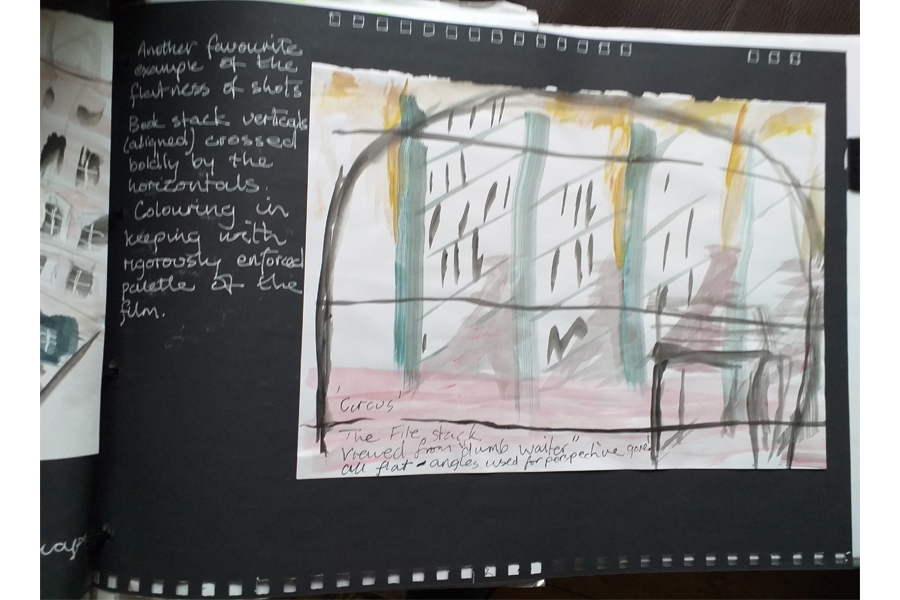
I began to analyse it in visual detail and to do secondary research, reading interviews and articles with Alfredson, Hoytema and Djurkovic as well as studying film criticisms relating to the movie. This extended through the second part of Autumn term.


Over the Christmas break, when the brief was ‘revived’, I began to make detailed studies

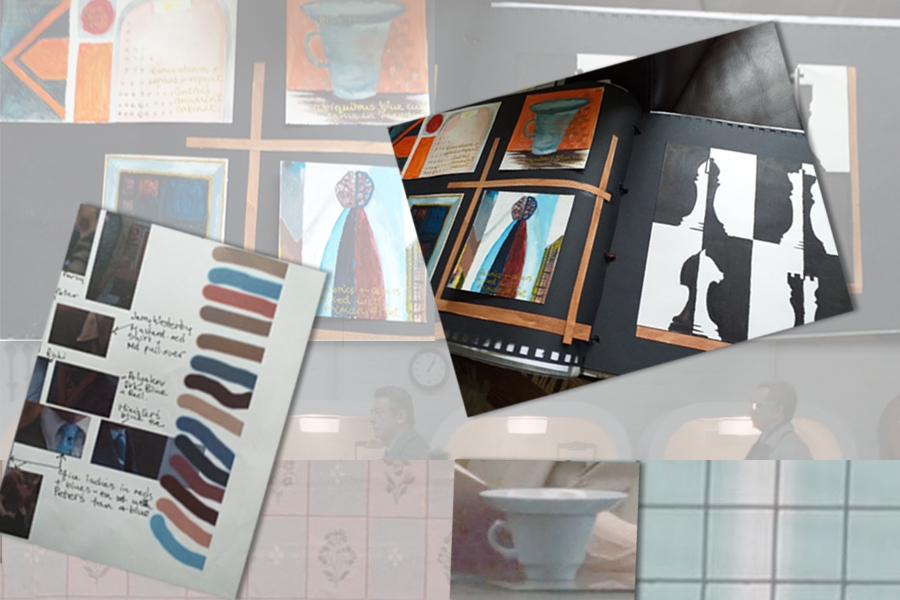
An idea was forming that I would like to build an installation/sculpture as a tribute to the cinematography …. to explore perspective, angle, framing, structure, layered windows, etc and the claustrophobic feel of the internal and external ‘architecture’ of the film.
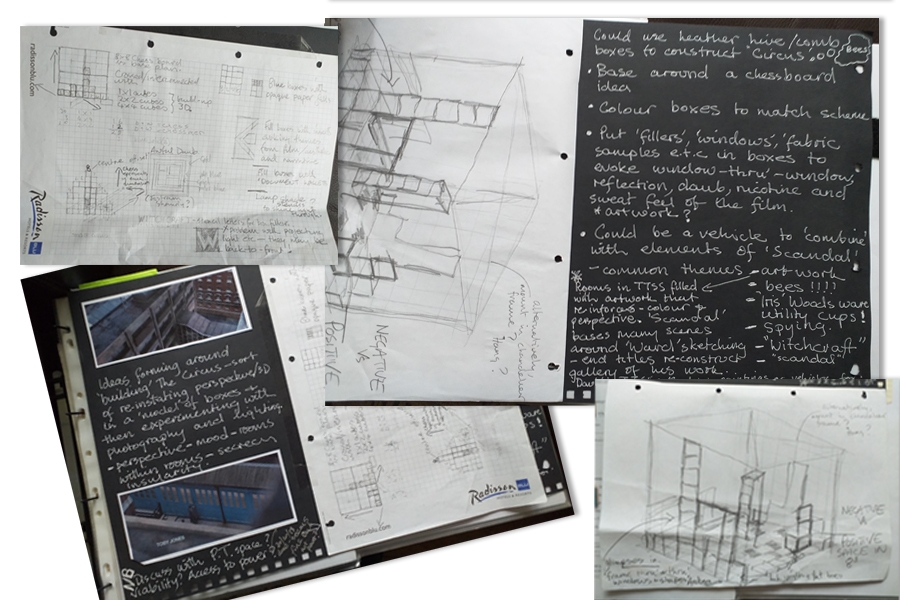

I would build it out of heather honey-comb bee hive boxes (of which I had a mountain in my loft) and create walls, filing stacks, windows, corridors etc. with a layout based around the chess theme in the film. It would consume an 8x8x8(honey box) cubic volume and I would attempt to balance positive and negative space within that. Some boxes would be ‘blocked’ by fillers that I derived from the colour palette, fabrics, artwork and interior design textures from the film. As the installation took shape I had to consider what to present it on and the left over, ribbed perspex from making ‘Neuroimagining’ came to mind. As soon as I placed the elements of the installation -‘Circus’ – on the board, the possibility of mood lighting it and taking photographs came to mind.

For the festival next month I now intend to present the ‘Circus’ installation, a set of photographs and an interpretive curatorial video called ‘A Melancholic World.’

